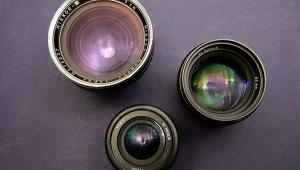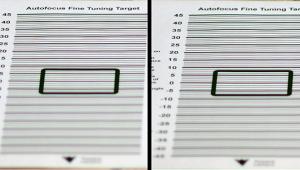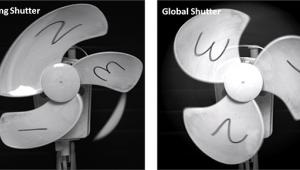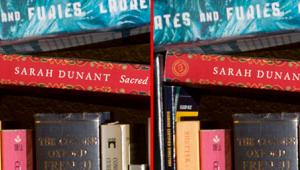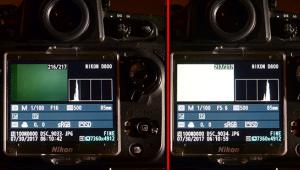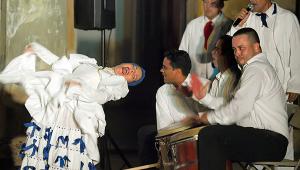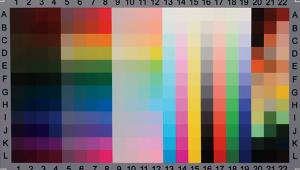How to Handle Camera Shake: Why Tripods Are Still Essential for Keeping Your Images Sharp

Have you ever checked out the battlefield photos made by Mathew Brady’s studio during the Civil War? They’re great, right?
But why? After all, the equipment was poor, the emulsions were slow, and the subject matter was often dead.
Well, these pix were shot on glass plates up to 8x10 inches in size, or roughly 50 to 80 megapixels in today’s terms. They were also the work of professional photographers—not casual snaps by army recruits. And they were all made with tripod-mounted equipment. No camera shake.
The results, usually contact prints, had more detail than a Lexus shop manual.
Compare that to now: A couple will pose themselves in front of a nondescript background, hand their iPhone to a random passerby, and plead for a pic. The victim obliges by awkwardly holding the phone at arm’s length, and then punching it as if dispatching a wayward ant. The predictable result? A heavily blurred shot, for which the stranger is obsequiously thanked.
But that’s not you. You’re an accomplished photog, with the savvy to steady your stance, hold your breath, quiet your bile duct, and gently squeeze the shutter release. You flatter yourself as capable of scalpel-sharp photos at 1/8th of a second, even with a telephoto.
Yeah, right.
It’s a fact that most serious photographers won’t hesitate to buy the sharpest glass. But I wonder if they think about whether they can hold their camera steady enough to justify the investment.
I was one of those people, confident that my practiced shutter squeeze and a decently short exposure would always result in the best that my optics could offer.
My assumption was wrong, as I learned after spending some quality time in my garage running a simple experiment.
The idea for this impromptu effort was straightforward: I mimicked a typical shooting situation with a 50mm lens, intent on determining the slowest shutter speed at which I could get first-rate sharpness hand-held. I clamped a resolution test chart (plenty are available on the web) to a bench, and used it as my subject matter. It filled only the central part of the field of view. To reduce ambiguities, I fixed the aperture and ISO (f/3.2 and 320, respectively). The exposure was kept constant with a dimmer on a lamp.
Standing back seven feet (again, a typical shooting distance), I steadied my stance and carefully fired off four or five shots at each shutter setting. I then viewed these pix in Photoshop, zooming in to see the finest resolved lines on the chart. Each shot was given a grade: from A for roughly 55 lines per millimeter, down to E for 31 lines.
Check out the figure at the top of this story, and you’ll see that at any given shutter setting, the sharpness varied a lot. This presumably was due to such things as my breathing cycle, muscle spasms, and the alignment of Jupiter’s moons. But the point is, there’s a lot of “noise” in the system, at least at most shutter speeds. Lesson: It pays to make multiple shots, if possible.
It also became clear that if I wanted a 50 percent or better chance of a high-res pic, I needed a shutter speed of at least 1/250th of a second. That old chestnut about choosing a minimum speed that’s the reciprocal of the focal length turned out to be nuts. Using 1/50th of a second with a 50mm lens ensured a blur. It was like trading in my expensive optic for bottle glass.
I repeated this experiment with a couple of support aids. First, I tried a monopod. That should eliminate shake in at least one of the three spatial axes, right? Well, indeed: The percentage of sharp shots at any speed was significantly higher than going hand-held.
Of course, with a shorter lens, the shutter time could be slower. But for lenses longer than 50mm, I’d need to dial in the fastest speeds I’ve got.
Finally, in a salute to Mathew Brady, I brought out a tripod. Nearly all results were crisp at any speed, although a cable release helped very slightly.
Perhaps you think, as I did, that your hands are as steady as factory work. It’s possible. But I suggest you do your own experiment. A fine lens is a terrible thing to waste.
Seth Shostak is an astronomer at the SETI Institute who thinks photography is one of humanity’s greatest inventions. His photos have been used in countless magazines and newspapers, and he occasionally tries to impress folks by noting that he built his first darkroom at age 11. You can find him on both Facebook and Twitter.

